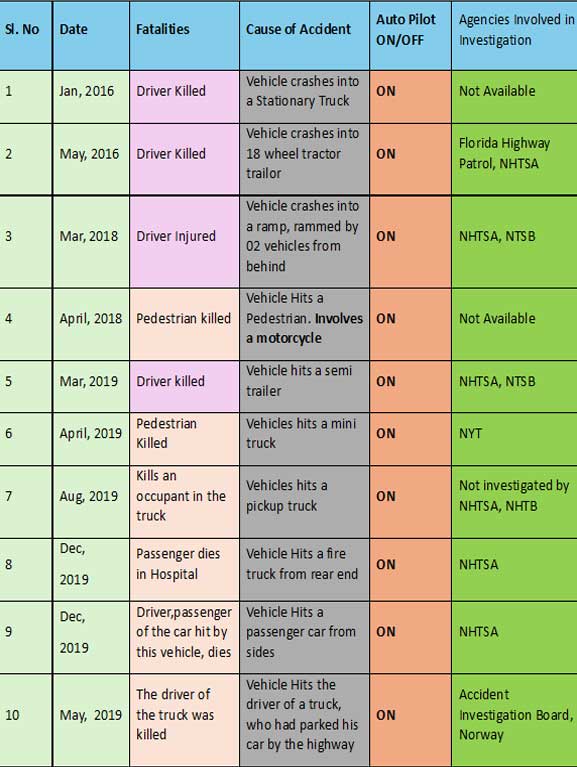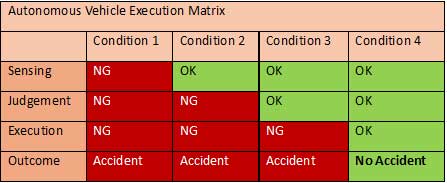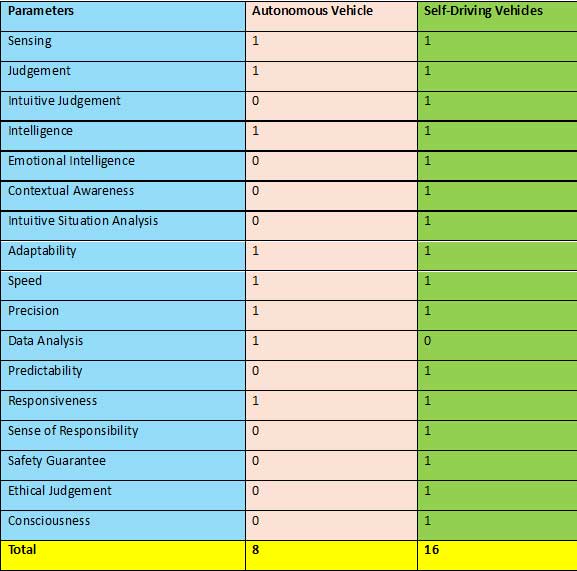
By :Bhaskar Nandi
The author is employed with a Global IT Consulting Organisation and is a Specialist in Manufacturing & Automotive Domain.
AV Programme: The 1st AV program was initiated by DARPA (Defence Advanced Research Projects Agency), in 1984 for On Road-Off Road capabilities. The next challenge was launched in 2004 by inviting different teams, with a target of completing 132 miles on a desert for 1 Mn USD. No team was able to complete this target. For a prize money of 2 Mn USD, this challenge was extended in 2005. And it was Stanford which won the race by completing the target in 6hrs 53 minutes. After that, most of the teams which had participated in the AV Program was naturally inspired to take this technology forward.
For leading OEMs like Daimler, Ford, VW, Toyota, Honda and other global players the domain of public transportation is very well known to them. Customer expectations, Regulatory Compliances and Regulatory Expectations, Public Safety and its Inter-Connectedness with Public Transportation, Social Responsibilities towards the users and non-users of passenger cars - these areas were thoroughly Tried and Tested by the OEMs who were in the business of making cars for more than 80+ years. By 2010, some aspects and features of AVs were getting developed, and they were being tested by leading OEMs. But, a Sense of Responsibility towards their vehicle-users and non-users prevailed that none of them had implemented Full Self Driving (FSD)mode in their cars. However, 2010 onwards we came across new entrants who were heavily investing in AVs to capture the market through their Technology Offerings!!
In this context, accident-related Data from NHTSA/NTSB is worth analysing for AVs . The nature of the accident (below table) suggests that at times, vehicles in FSD modes behaved like a ‘Run-away Rogue’ on the road, unable to discern between a trailer or tractor, or even chasing pedestrians or parked vehicles.

· Technology shall improve. But, in all the above cases, the accidents could have been easily avoided had the Autopilot mode been overridden by manual intervention. The purpose of above data is not to scare innovation. The purpose is to caution the overzealous pursuit for AI Powered AVs, which has, at times, proved fatal. (For word restrictions, limited data has been shared)
AV Execution Matrix: AVs operate on 03 modes - Sensing, Judgement and Execution. Sensing (uses 8-12 cameras, LIDAR Sensors, Radar Sensors and Vidar sensors; For judgement, various algorithms are used to study and process the inputs received by the sensors and cameras; For execution, the mechanical and electromechanical devices are actuated. For appropriate actuation and execution of the output devices(brake-steering-
We, human beings, are naturally equipped with 03 modes, backed by our Consciousness, and Privileged by our Conscience.

Point of View:
1. AVs to reduce accident - AVs are in an evolutionary stage. It is premature to conclude that AVs will reduce accidents. (With continuous improvements, a lot more ground needs to be covered)
2. Unknown vs. Known: The Paradigm of Unknown is Infinite, The Paradigm of the Known is Finite. The Learning-Simulation of the AI by the Known is possible with the consumption of known data, but the education of the AI of AVs by the Unknown is still Infinite… As a result, assuming, for now, that AVs will make our roads safer is preposterous.
3. Consciousness vs. Algorithm: What makes us Superior to any scientific information is our Human Consciousness. Even though AI powered machines have surpassed human performance at many instances, It may be premature to replace Human Consciousness with the knowledge of Algorithm based AVs.
4. Objective vs. Subjective Data: Training the AI system of an AV with Objective Data, will surely give Objective results. But training the AI with Subjective Data, may not give Objective Result. The AVs are yet to differentiate between Objective and Subjective.
Parametric check between AVs & SD Vehicles: An AV is an Intelligent Machine, in some cases, advanced intelligent machines. But what it lacks is the Consciousness of a Human Being. Basic traits of human beings like Intent, Purpose, Sense of Responsibility, Belongingness, Ethical Sense of Being and Intuition can never be replicated by machines or sensors.
The table compares various necessary traits of Human Consciousness vrs AI powered AVs:

Naturally occurring Intuitive Queries:
i)For its own safety, an AV can sense the environment, judge the environment and execute RHB response (Ride, Handling & Braking). However, can the same vehicle, in the Interest and for Goodwill of traffic or for pedestrians around, will also act with similar Fidelity and Sense of Responsibility?
ii)An AI driven AV can act in its own interest. And may also be able to meet the safety norms and regulations. And avoid accidents. But can it also replicate the Human Behaviour that carries a Sense of Responsibility towards Mankind and Society?
iii)Safety Guarantee: Safety is something that cannot be measured. Safety is something that needs to be guaranteed. In AI powered cars, can there be an algorithm that is able to Guarantee Safety? Can it also guarantee safety for pedestrians and traffic around itself?
AI plays a vital role in our lives. Code Delivery to Drug Discovery, Text-to-Speech conversion, Weather Forecast, Cancer Detection & Treatment; Language Translation - with guardrails, and with room for improvisation we have come across great results. But in AI driven cars, the Room for Course Correction is Limited!! Perception and Intuition is the margin that separates us from data-based driving (AV) & Self Driving cars.
Unlike an AV which acts in its own Interest, a human being is Designed & Equipped by the Divine to Act on Behalf of overall Situation & Surrounding.
AI driven cars are Designed for Responsive Driving.
Self-Driving cars are subject to Responsible Driving, too.
(Acknowledgement: The author is indebted to the Deep Insights & Futuristic Vision of International Author Rajiv Malhotra; his books, AI and the Future of Power, and The Power of Future Machines is inspiring and influential. A Must Read every Desh Bhakt - AI Aspirant.)
(Disclaimer: The Intent of the article is not to malign or to discourage any Innovator or Manufacturer. The Intent is to Caution about the Pitfalls on our ‘Road to Glory of AI Adoption’. And be responsible enough towards Mankind !!)
See What’s Next in Tech With the Fast Forward Newsletter
Tweets From @varindiamag
Nothing to see here - yet
When they Tweet, their Tweets will show up here.





























